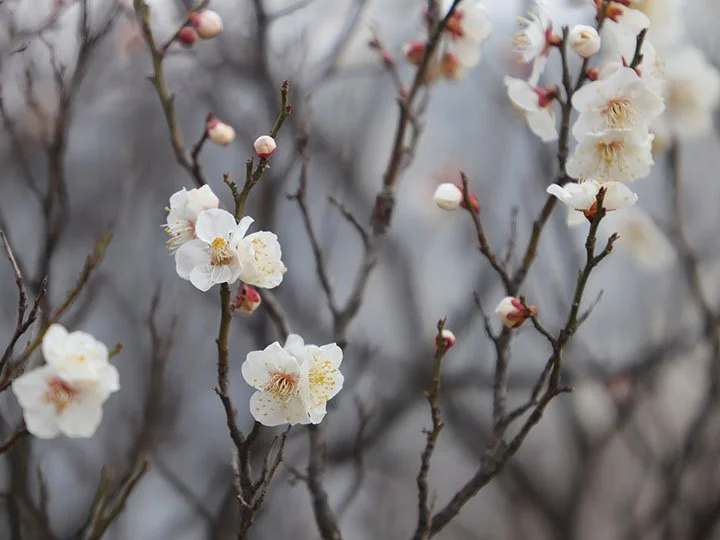Perhaps the first flower I grew was the morning glory. When I was a child, the morning glory was very familiar to me, but as I grew up, it gradually became a forgotten flower. Allow me to share with you a famous anecdote about a morning glory dating back to the 16th century. This story involves the renowned Samurai General, Hideyoshi Toyotomi, and the great tea master Sen no Rikyu.
The samurai, Hideyoshi, heard that a lot of morning glories were blooming beautifully in Rikyu's garden. Curious to see them, Hideyoshi asked Rikyu to show him the flowers. Rikyu invited him. On that day Hideyoshi was looking forward to seeing beautiful morning glories but to Hideyoshi's surprise, all the flowers were cut, and there were no morning glories in the garden. Hideyoshi was probably taken aback or even angry. However, when he entered the tea room, he discovered a beautiful morning glory arranged in the alcove. Hideyoshi was deeply impressed by Rikyu's aesthetics. This anecdote is very famous and told for many years.
Initially, when I heard about this story, I was not very impressed that Rikyu had thrown away all the morning glories.
On a slightly different topic, last month, my garden in Connecticut was filled with many blooming peonies so I brought several big peony buds to my tea ceremony class for the tea room. A week after, I went to the tea class as usual. When I entered the tea room, my eyes caught a large peony bud gracefully arranged in the alcove, exuding a dignified beauty.
Peonies in the garden typically bloom for only two weeks, so I always pick as many as I can and place them in several large vases or share them with my friends. At home, I could not think of arranging a single peony, because all beautiful peonies should be admired evenly.
The dignified beauty of that single peony in the tea room reminds me of the morning glory anecdote. It is said that Rikyu had an excellent sense of beauty, and this experience has convinced me of his aesthetic sense. Understanding the true essence of things takes time.
Suddenly, I wanted to see a certain book and started looking for it on my bookshelf, because the book shows Rikyu's morning glory which I am imagining. Simplicity is for emphasizing its beauty.
From the book, Imayoukadensho by Toshiro Kawase (川瀬俊朗 今様花伝書より)
Inspired by this realization, I decided to plant some morning glories in my garden last month. Unfortunately, they were eaten by animals, and most of their leaves were gone. My desire to see simple morning glories has grown stronger in me, and I plan to wait and plant them again next year.


































